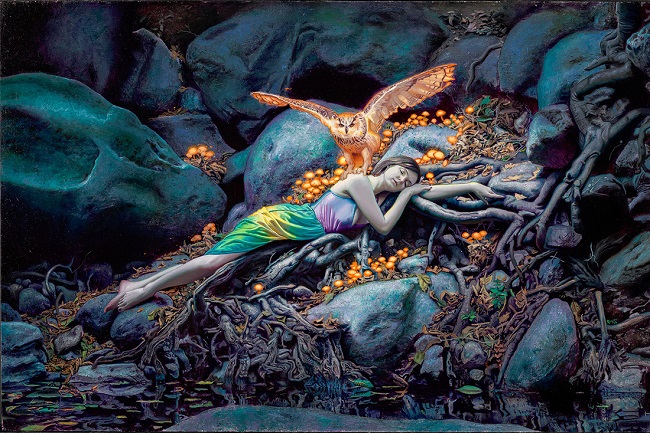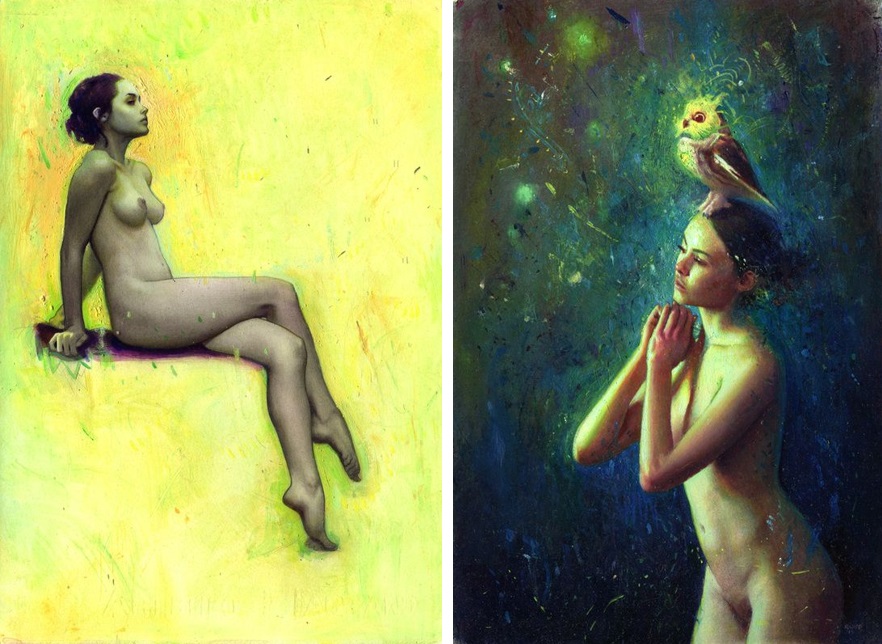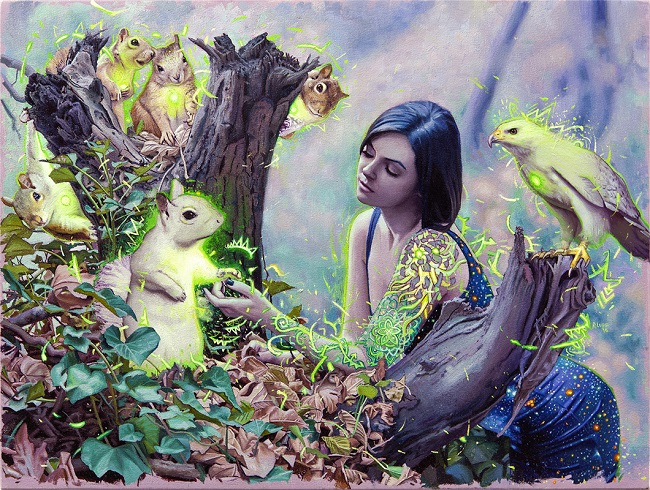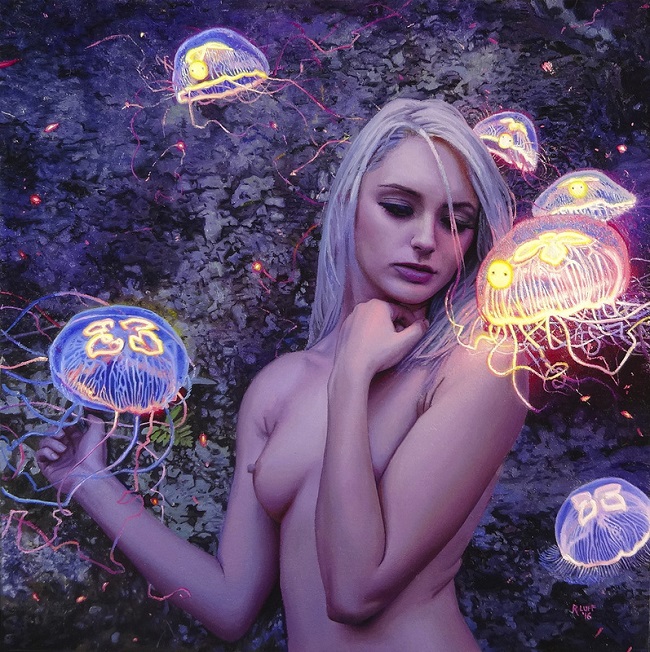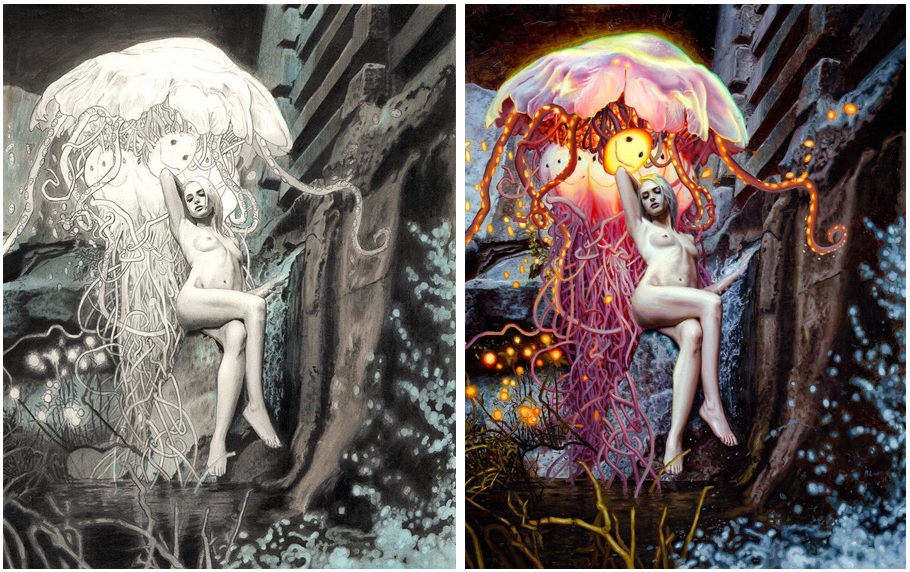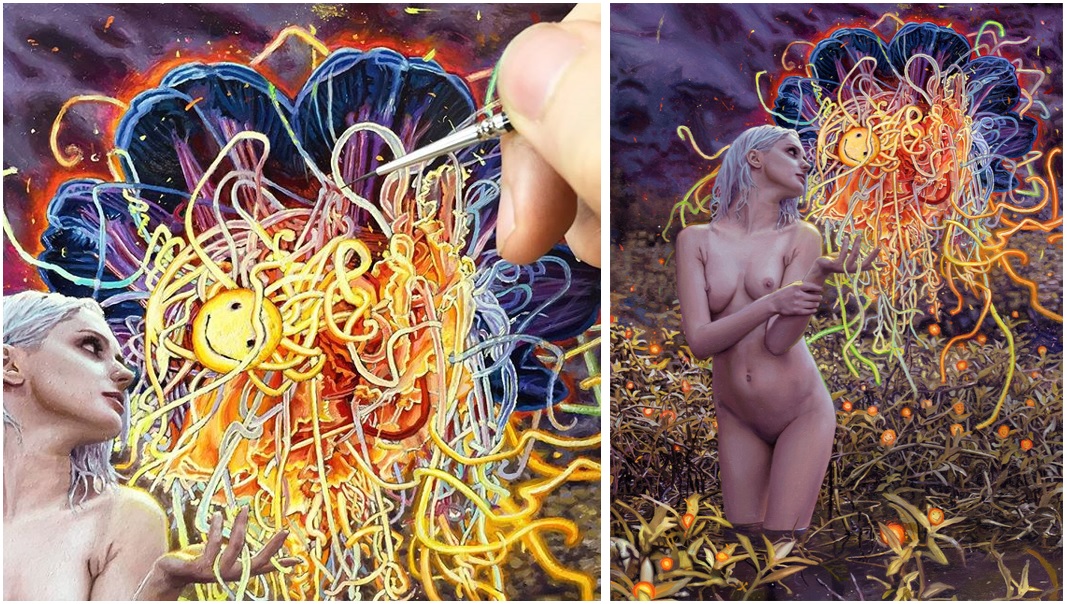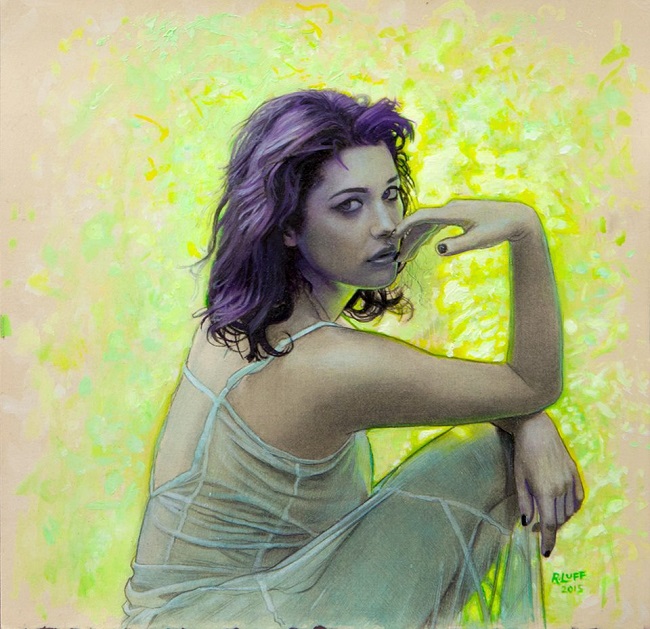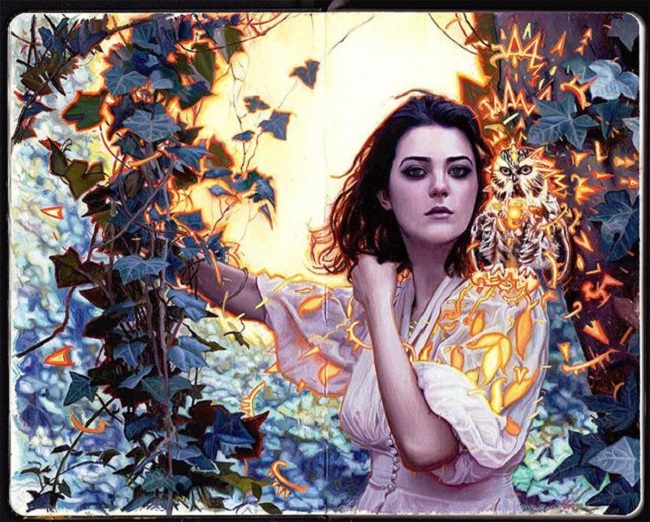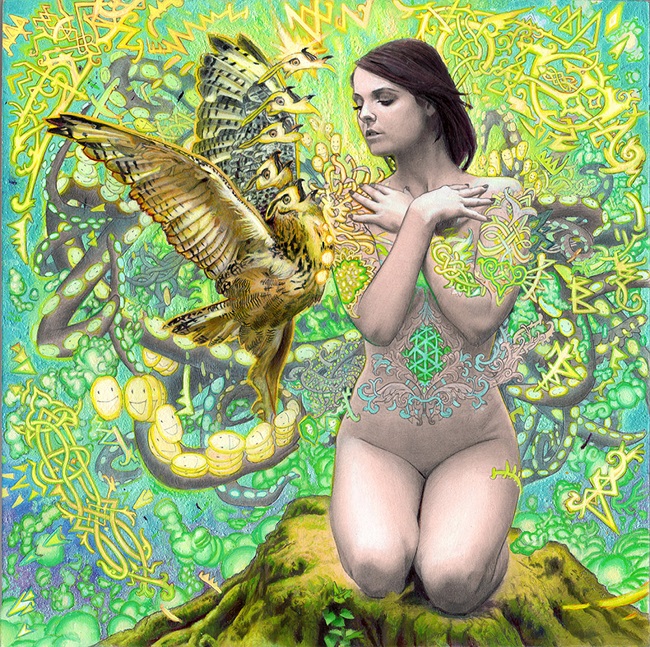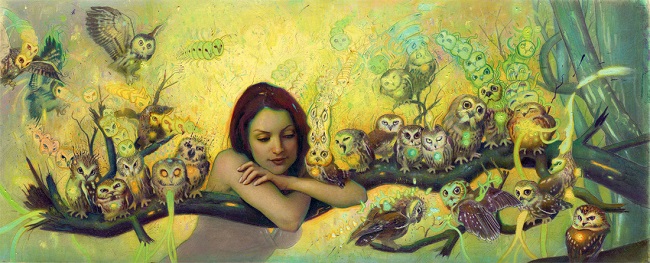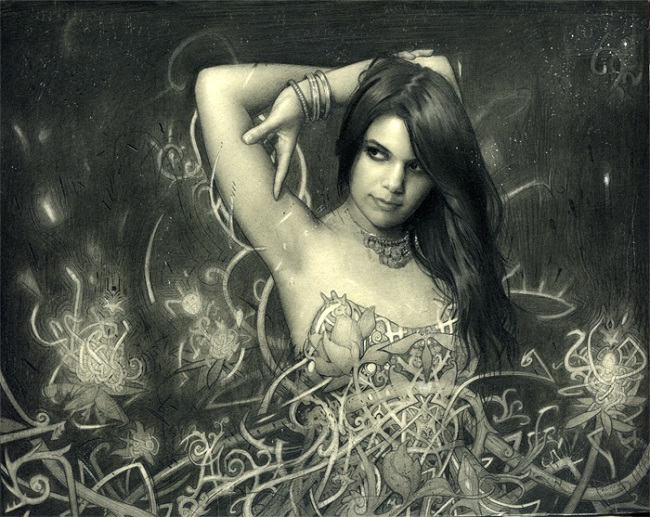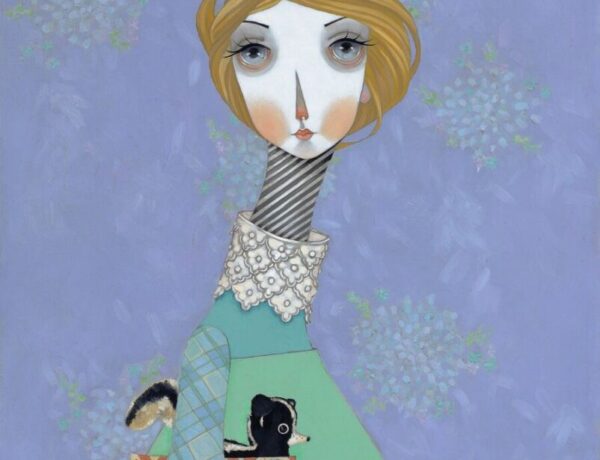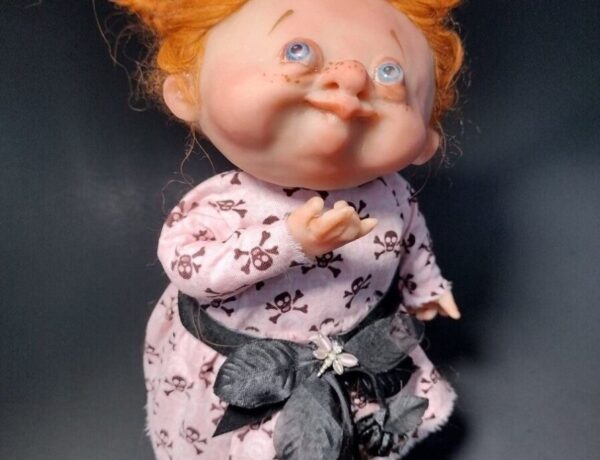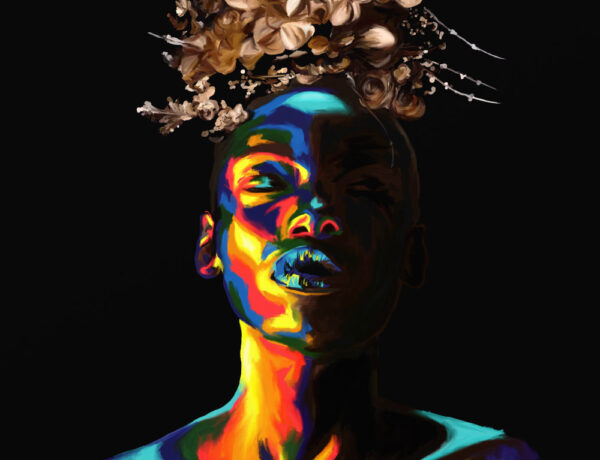When you step into the world of Australian painter Rodrigo Luff, be prepared to see a world where the essence of life, of nature, becomes visible. His finely detailed works in oils or mixed media bring with them a physical presence, an acceptance that here stand mysterious forces revealed to our eyes, a yearning to catch a glimpse ourselves when next we visit the woods and find ourselves in nature’s quiet embrace. Although based in Sydney, Australia, it is in the US that Rod has made his mark in the artistic world, both through his own work in solo and group shows and as co-founder and curator of the annual Moleskine Project exhibition.
When you look at artwork on a digital device you often experience more intense colours, more brightness than you see when you encounter the original work. This is certainly not the case with Rod’s work ~ if anything the startling luminosity is more intense in person, truly remarkable work from a remarkable artist.
Website | Facebook | Instagram | Twitter | Tumblr
b.b: Your work is incredibly rich in detail, a finely crafted balance between realism and surrealism ~ is this something that develops as you work on each piece, or do you have clear idea of what the finished work will be throughout?
RL: I have a clear idea at the start but as I get involved in the daily grind of the process it has to be revised constantly to allow space for the painting to grow. I use realism to establish a dominant pattern over the image that resembles everyday perception and then try to break that pattern in just the right way with energetic glowing patterns and strange creatures. Finding the balance and tension between these two forces is what guides me throughout the painting, seeking a kind of psychedelic-realism in the final work.
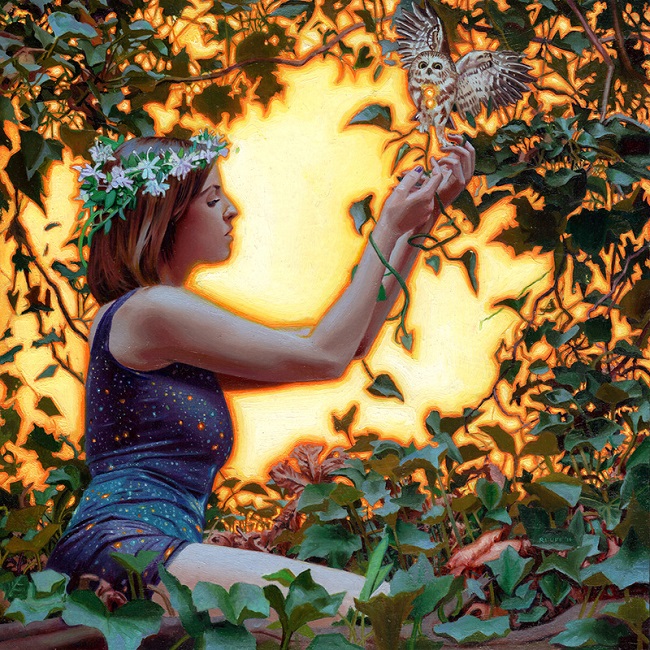
b.b: Speaking of fine detail, you often spend a great deal of time completing a piece ~ do you find it difficult to walk away, to draw the line as to when a work is finished? For our readers, what is the longest you have spent on a single piece and how long would your average be?
RL: My recent works have had the kind of detail that has called for more patience than ever, but I find it soothing and meditative to work on them for long hours, as my favourite quote by William Blake goes, “Singular and particular detail is the foundation to the sublime.” This isn’t just about pure verisimilitude, but a deep immersion into capturing the unique characteristics of the subject with skill and attention to tap into its broader, archetypal essence. In “Nemetona” and “Daybreak” I tried to paint the leaves as silent, supporting characters, their individual shapes as attentively painted as portraiture, so that their archetypal green lushness was evoked.
Considering that attention to detail, It’s difficult to step away! But lately I have been forcing myself to stop once additional brush strokes fail to improve the overall effect. At that point I usually hide it away to work on something else and come back to it later with a fresh eye, but it’s taken me years to learn that.
The longest painting I’ve worked on was “Nemeta’ which took 6-7 weeks, but the average is more like 2 weeks.
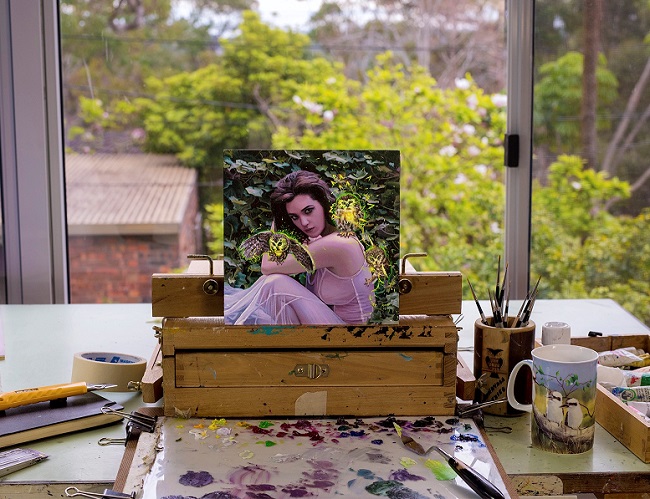
b.b: There is a definite “sylvan glade” feeling with much of your work, A Midsummer Night’s Dream with a surreal edge perhaps. What have your inspirations been that brought this about? Personally I see a homage to the work of Norman Lindsay in some of your art, is this the case?
RL: In my teenage years, I wanted to be a comic artist or illustrator. After I left high school, those career goals changed, but I still sought artists that portrayed anything imaginative, magical or surreal. This includes J.W. Waterhouse, Dali, N.C Wyeth, John Millais, Mucha, Klimt, James Jean, the films of Miyazaki, Luis Ricardo Falero, Jules Bastien-Lepage and Herbert Draper. I’ve been familiar with Norman Lindsay’s works since I was a kid, those magic pudding books were iconic. He was such a creative, prolific individual who has a fascinating life story. It may not have been a conscious effort but I think it might be possible his sirens have found their way into my work as some kind of unconscious homage!
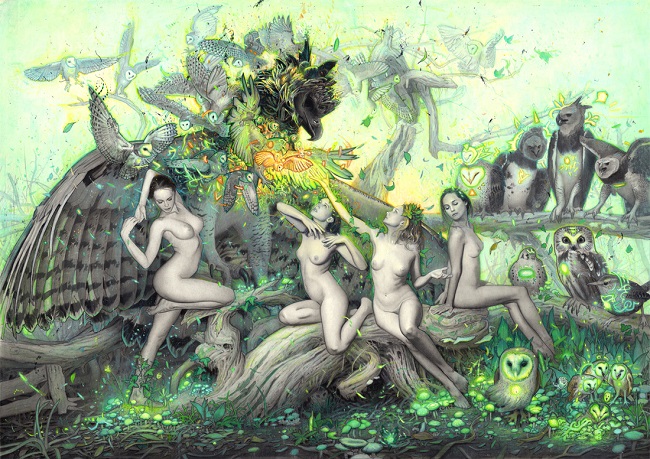
b.b: The luminosity you achieve in your work is stunning, how did you first come across this technique and did it take much trial and error to achieve the desired result?
RL: Thank you for the kind words, the luminosity goes back far to my old comic book art in high school, there was always an attempt to convey glowing, neon magical energy in my work! However, it wasn’t until I got over to Europe in ‘09 that I saw what was possible with oil painting, particularly during the J.W. Waterhouse retrospective exhibition in London. I just stood there in person, soaking in how the vibrant areas would radiate off the canvas, balanced by rich colours and subtle detail. Since then I’ve pursued that technical effect through different media, slowly learning better combinations of opacity, transparency, values and tones through which the luminous areas can glow.
b.b: Some other signatures of your work are often present, owls, an octopus-like figure, the Sun Face. What is the back story behind these, what message are you trying to convey to your viewer with them?
RL: The owls are totemic in my work, they have an ethereal presence that is captivating and they’re capable of such a wide range of expression that I don’t think I can ever paint them enough. I think they evoke that eerie sensation that artist Paul Klee noticed, “In a forest I have felt on certain days that the trees were looking at me”. The owls are emblematic of mysterious and chaotic forces in nature that we can engage with to some extent, but never fully understand or escape.
The Sun Face and it’s octopus-like tentacles are imaginary, surreal creatures that help signify the underlying themes of Luminosity and Illumination that run through my work. They represent the primordial magnetism of light that’s historically associated with our deep human desire for illumination, warmth, knowledge, love and revelation.
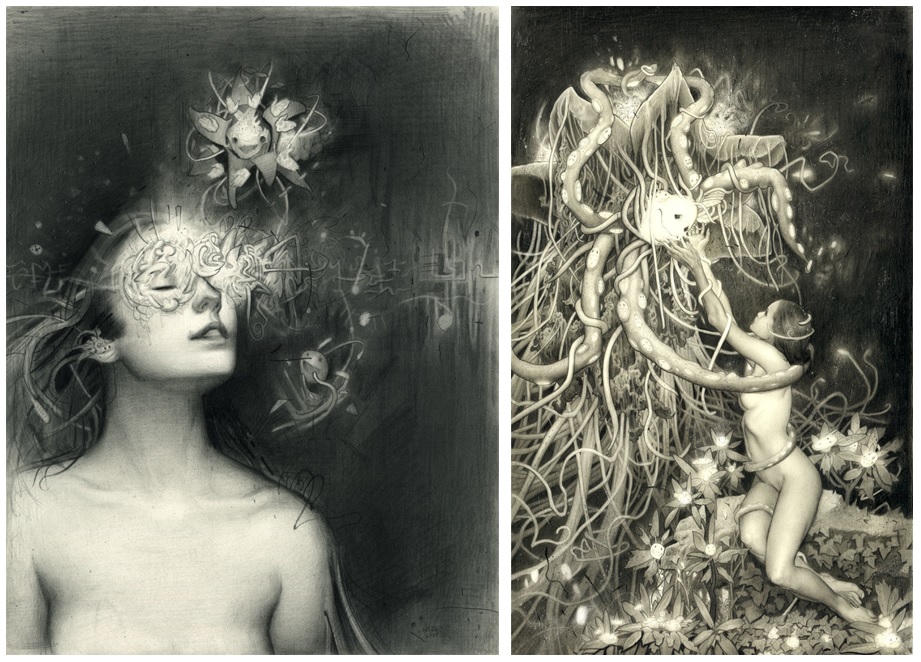
The Sun Face embodies this at the most basic level as an abstract form of glowing awareness. The luminous, sensual energy that infuses the creature refers to the experience of “transversal ecstasis”, losing oneself to the world in euphoria, reverie and fascination.
The tentacled appendages are symbolic of the tactility of light and its ubiquitous presence in daily life, from technological devices or natural forms, which can either embrace or bind us.
b.b: We have many creatives in our audience and they just love the gory details of technique. Can you share your process with us, how you decide on your media and how this has evolved over your career?
RL: I’ve tried lots of different media and techniques and I most commonly work with mixed media drawings on paper and oil paintings on wood panel or paper.
I most often get asked how to oil paint in the Moleskine sketchbook. Once I’ve drawn up the composition, I’ll seal the paper with a few coats of transparent medium GAC 100 until it’s smooth and glossy. Then I’ll paint over the top in oils as per usual, I aim to finish any oil painting on the first layer. While it gives you more control, it’s also a bit more limiting if you’re following the drawing underneath.
My mixed media process involves layering different media on the paper over time, so I recommend using thick papers of 300 gsm (140 lb) or so that can handle lots of washes and layers of rendering. I like smooth Fabriano watercolour paper at its full thickness of 640 gsm (300 lb).
I start with light acrylic washes and slowly hatching in pencil to build up layers of shadow and form until I find a good range of tonal values, which is more crucial to me than colour at the early stages. Then I’ll usually overlay colour through more acrylic washes, coloured pencils, pastel, and sometimes oils until it’s done.
I love to experiment with layering iridescent medium over areas to give certain parts a metallic sheen that evokes the essence of bird feathers and other natural vibrant forms. On the downside, this process doesn’t have immediate results and can take longer because of the amount of layers needed to develop the form and light.
I haven’t perfected any process, but making continuous mistakes is how I’ve learnt and discovered these ways of working. You’ve got to experiment and try it out for yourself a lot, it’s important to know the ups and downs of any process from practical experience and choose whatever works best for you.
b.b: The Moleskine Project has been going for 6 years now and seems to be going from strength to strength, how did this project originate and do you plan to keep on with it into the future?
RL: The Moleskine Project started in 2010, when I blogged my attempts to fill a new Moleskine book cover to cover because I had failed every previous attempt quite miserably. Ken Harman got in touch and featured my work on the Hi Fructose online blog and also offered to host a solo exhibition featuring the deconstructed sketchbook once it was filled.
One year after that first blog post, Ken opened Spoke Art Gallery in San Francisco with the Moleskine Project, which sold out and since then we’ve kept it going as an annual group exhibition. Working as co-curators, Ken and I have been featuring an international array of some of the brightest talents in fine art, illustration, comics and more.
Spoke Art have also released the first published volume of work from the Moleskine Project exhibitions, featuring fantastic work from fifty artists bound inside a leather embossed hardback and printed the same size as the originals to maintain authenticity. I hope anyone out there interested in that will have a look at http://spoke-art.com/collections/the-moleskine-project.
I’m really grateful to be involved, the project has grown beyond all my expectations. Having had the chance to work with many of my favourite artists, it’s been a better show than I ever could have achieved on my own! I can’t thank Ken and the artists enough for making this happen.
We do plan to continue the annual exhibition at Spoke Art S.F in July ‘17, and hopefully at the newly opened Spoke Art N.Y.C afterwards if possible. We’re also hoping to release the next volume of the published collection of artworks from the previous exhibitions in the near future as well.
b.b: Speaking of the future, what are you working on at the moment, and what shows do you have coming up?
RL: I’m currently finishing a painting for Thinkspace Gallery who are hosting a booth at SCOPE Art Fair during Art Basel Week in Miami, opening the first week of December. There’s also the next installment of the Moleskine Project which I’m always stoked to do, coming to Spoke Art S.F. in July ’17, as well as the 2nd volume of the published Moleskine Project when it’s ready. I’ll be continuing to have group exhibitions and will be focusing on a solo exhibition with Thinkspace Gallery in the next few years.




